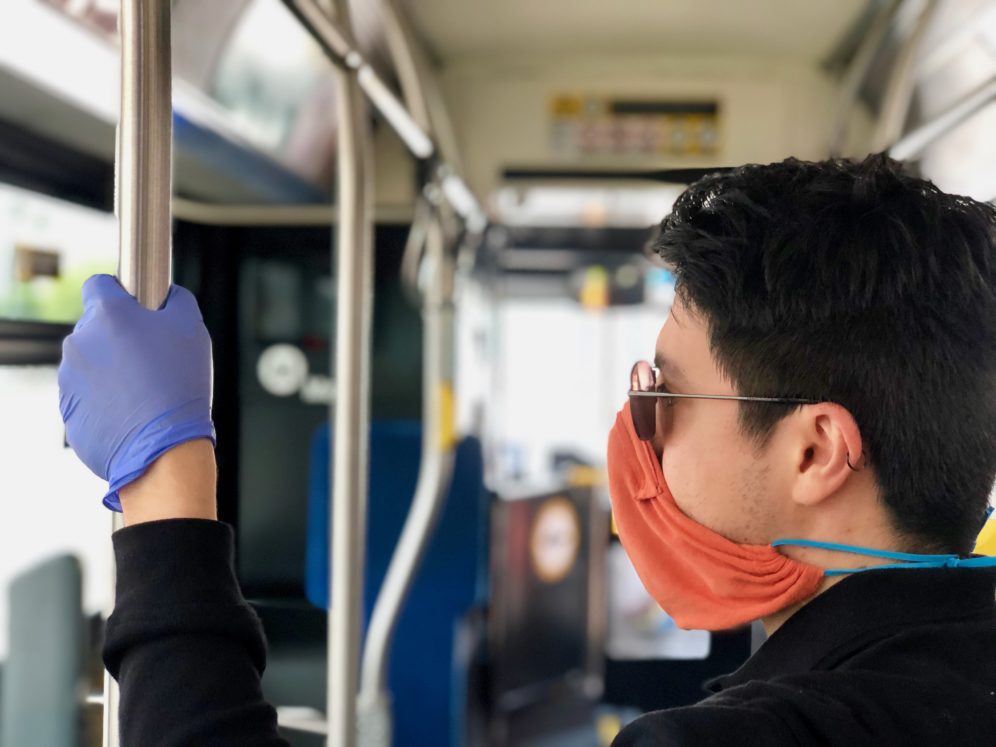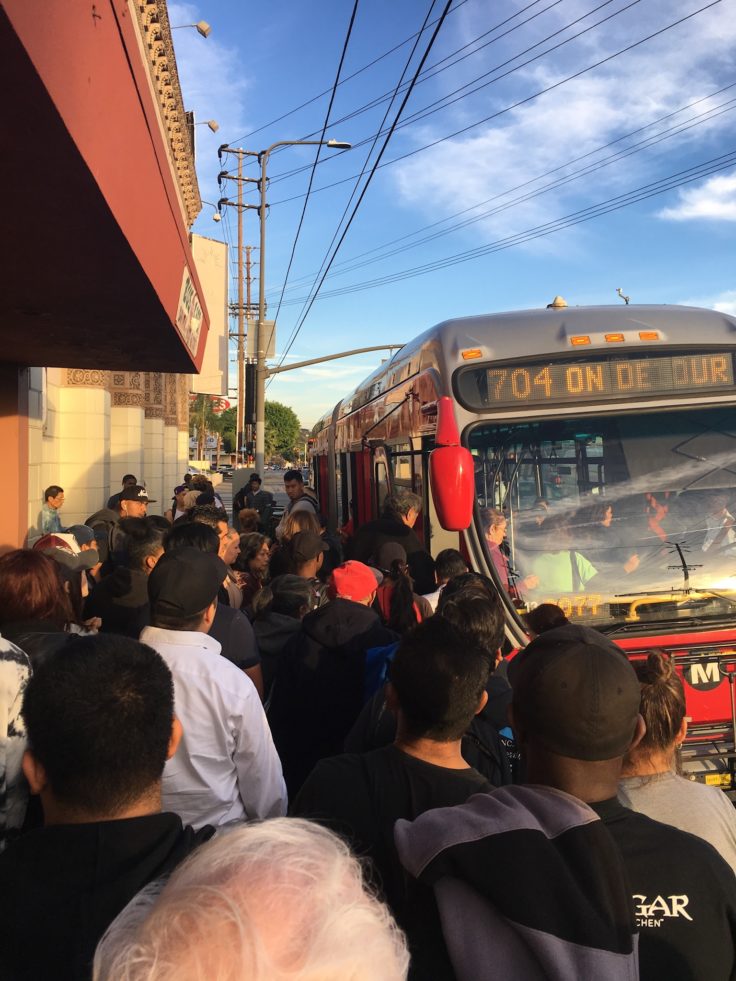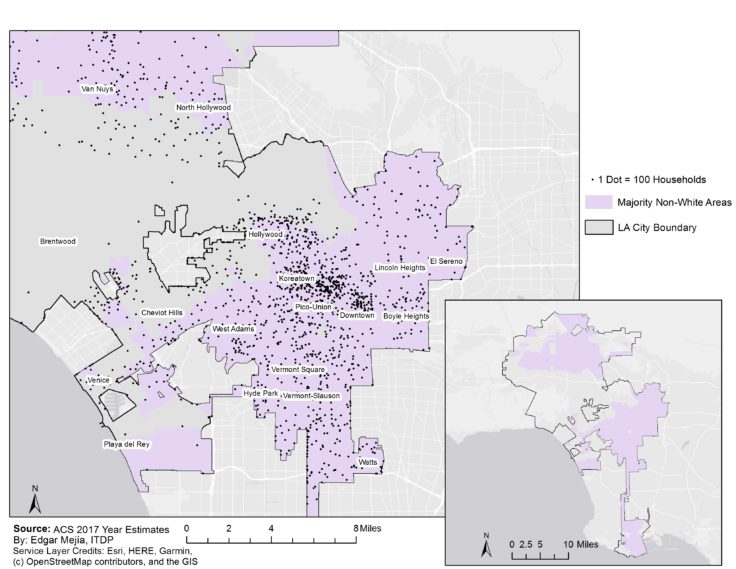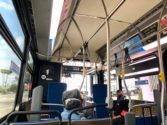
June 23, 2020
Not Everyone in Los Angeles Drives
One Angeleno’s Experience Accessing Opportunities and Community Through Public Transit
I distinctly recall as a 13-year old in South LA spending countless hours studying the web of routes on the Los Angeles County Metropolitan Transportation Authority (Metro) map. I would pick locations between my home and a constellation of destinations throughout the city and take those trips on the buses and trains available to me.
Learning the bus routes in my city became my hobby growing up because I did not have reliable access to a car. Both my parents were immigrants and worked tirelessly to provide for me and my siblings. My transportation solution was a Metro student pass which gave me unlimited access to local buses and trains for an affordable USD $20 a month.
Growing up, the bus was a mode of travel that gave me autonomy to move around and learn and understand my city on my own terms. I took public transit everywhere including school, internships, extracurricular activities, and often just to go to a famous burger joint, In-n-Out, with my friends after school. In fact, most of my friends, family members, and neighbors in South LA relied heavily on Metro.
Recently, I spoke to a college friend who was shocked to learn that living in Los Angeles without a car was possible. My friend wasn’t entirely to blame for believing in the stereotypes. News articles quickly condemn the city as the car capital of the world, car-obsessed, and consistently at the top of the nation’s most traffic-ridden places. Every Thanksgiving holiday in November, when hundreds of thousands of people travel to visit friends and family, news stations show the city’s freeways as a sea of cars gridlocked on a 14 lane freeway. With such images, it is easy to believe expressions such as nobody walks in LA.
Unfortunately, my everyday experiences, and stories of Los Angeles’ public transit richness rarely make it into the national and international narrative. The human side of the bus isn’t considered or presented as worthy news. Nevertheless, Los Angeles has an extensive public transit system. Typically, Metro has over 300,000 weekday daily rail boardings, and around 600,000 weekday daily bus boardings and is part of hundreds of thousands of Angelenos daily lives.

Understanding Public Transit Access in Los Angeles
Los Angeles has a public transportation network that encompasses the entire region, made up of 88 cities and unincorporated areas. We can ride the Metro bus to school, hop on the local DASH bus to get to the grocery store, use the A line (formerly known as the Blue Line*) to visit family in Long Beach, bypass traffic on the freeways to visit Old Town Pasadena via the L Line; and ride in style and comfort on the Commuter Express to Downtown LA from the South Bay. The latest addition to our transportation network launched in 2019. Angelenos on the Westside now have an on-demand microtransit shuttle service called LAnow, a novel solution to customer’s first and last mile needs.
In addition, this system is steadily expanding. Metro’s operation already spans almost 1,500 square miles and is growing rapidly by laying 100 miles of rail even in the midst of a world pandemic. Anticipated budget cuts due to the pandemic will likely influence many of these projects, but for the moment, the region remains dedicated to expansion and has used decreased metro ridership to speed up many of these expansions.
ITDP’s Indicators for Sustainable Mobility also suggest that people in Los Angeles have significant access to public transit for the US. For instance, 44% of the population, 58% of all jobs, and 56% of low income households are within a 500 meter (0.31 miles) walk or a 10-minute bike ride to frequent transit in the City of Los Angeles. This demonstrates that there are non-car options available to residents, yet only about 15% of Los Angeles residents walk, bike or use public transit to get to work.
This could be because only 5% of jobs and 4% of Los Angeles residents are accessible within 60 minutes by rapid transit, walking, or biking. Rapid transit is defined as a frequency of every 10 minutes or less during peak hours during the weekday. The gap between jobs and people accessible within an hour via rapid public transit demonstrates why many people choose to drive. Transit is an important part of a city, but it needs to be designed to connect people to locations where they need to go and do so in an efficient way. Transit that doesn’t connect people to their workplaces does not offer much value to the regular commuter.
Equity of Access and Moving Forward
However, not everyone in Los Angeles owns a car to reach jobs or opportunities in under an hour. Research confirms that low-income households are less likely to have access to vehicles than higher-income households.[1] In addition, of the approximately 200,000 households in the City of Los Angeles that do not have access to a car, many tend to be concentrated in communities of color, as seen in the map below.
[1] Blumenberg, Evelyn. 2017 “Social Equity and Urban Transportation” in The Geography of Urban Transportation, 4th Edition, Genevieve Giuliano and Susan Hanson, Editors. New York: The Guilford Press. Pages 338-358.

Surveys from Metro also show most public transit riders are more frequently from low income or communities of color. A ridership survey from 2018 showed that more than 80% of riders were Black or Latinx and 72% lived in households that made less than USD $25,000 annually, a common indicator for poverty.
Although the bus allowed me to access opportunities outside of my neighborhood, I faced many issues with public transportation. For example, the high school I attended in the affluent Venice neighborhood was only a 20 minute car ride away from where I lived. However, the lack of a direct bus route required me to take two buses resulting in a 1.5 hour total travel time each way. I recall many sleepless 6am mornings at the bus stop hoping I didn’t miss my bus or praying that it was not crowded. While as a high school student I accepted these lack of public transit options, it is problematic for many Angelenos, especially those with multiple jobs, a common reality for many recently arrived immigrants.
This post was written by Edgar Mejía, ITDP Los Angeles Fellow, South LA Native, and current Master’s student in Urban and Regional Planning at UCLA. Edgar aspires to build, improve, and expand access to public transportation for Los Angeles’ most under-served communities.
The COVID-19 pandemic has amplified the importance of equity-driven transport policies. The higher sustained ridership on Metro compared to other similar regions suggests that a large percentage of transit riders in Los Angeles are both essential workers and reliant on public transit for their commute to work. In addition, the early June shutdown of overnight service in response to Black Lives Matter protests ended up resulting in thousands of riders being stranded, many of whom are essential workers, and people of color. These facts have only reaffirmed the mission and plight of many transit advocates: public transit is an essential part of our social safety net that deserves proper funding and expansion.
Those who rely on public transit experience the city differently from those who travel primarily in a private vehicle. Because of these two starkly different lived experiences, the voices of the transit riders are often left unheard. Public Transit is a crucial lifeline for millions of Angelenos. Any improvement, increase, or expansions of service will directly impact and benefit the most marginalized members of our society.
This message clearly resonates with Los Angeles County voters as they overwhelmingly supported the 2008 and 2016 ballot measures that use sales tax to fund public transit indefinitely. Funding is an important first step, but planning and zoning must be thoughtfully executed so that these Angelenos can be served by their transit, and with hope, joined by many more new riders.
I hope that for many generations of Angelenos, public transit will continue to be an ever more defining part of the experience of growing up in Los Angeles, like it was for me.







